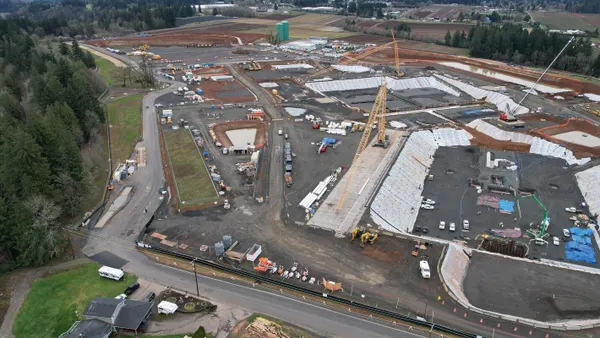In a classic tug-of-war between keeping contractors safe on the job and the cost of that safety, builders are battling the Occupational Safety and Health Administration over its proposed standards for silica.
Crystalline silica is found in soil, sand, granite, quartz, and other natural substances that contractors work with. When blasted, cut, or drilled, those stones and minerals produce dust that workers can inhale. Long-term exposure can lead to respiratory problems and silicosis, a chronic lung disease.
OSHA’s plan to require more aggressive protection has been in limbo since the agency introduced it in September 2013. After multiple extensions, the proposed rule had one of the longest public comment periods in OSHA’s history.
Although the comment period is closed, the Construction Industry Safety Coalition, a consortium of 25 trade associations, sent a report to OSHA last week saying the agency’s proposed requirements for lowering the exposure to silica on job sites could cost the industry billions of dollars more than the government has projected.
In an accompanying letter to Assistant Labor Secretary David Michaels, a lawyer for the Coalition called the proposed rule “potentially… the most expensive OSHA standard ever for the construction industry.”
The government’s case
Both sides agree that contractors working in mining, quarrying, road construction, with cement or flint, and in sand blasting and glass industries are most likely to be at risk.
But they disagree about the best way to mitigate that risk.
OSHA’s proposed construction standard would require employers to measure the amount of silica that workers are exposed to, during an eight-hour work day, to see if it could exceed a level acceptable to OSHA (25 micrograms of silica per cubic meter of air). If the exposure measures more than 50 micrograms, the company must protect workers.
In addition, the proposed rule would require construction firms to limit workers’ access to high-exposure areas; use dust controls to protect workers from inhaling higher-than-acceptable amounts of the powder; supply respirators when those dust controls aren’t enough to limit a worker’s exposure; and offer medical exams, including chest X-rays and lung function tests, every three years to workers who are exposed to high levels of silica for 30 or more days a year.
The rule would also mandate more employee training and careful record-keeping that documents workers’ exposure and medical exams.
At a congressional hearing in mid-March, Labor Secretary Thomas Perez defended the upcoming standard.
“We’re trying to save lives here, and exposure to silica kills,” Perez told the House Labor, Health and Human Services, Education and Related Agencies Subcommittee.
House Republicans questioned the need for the rule, suggesting that OSHA do a better job of enforcing its existing standard. Compliance with the current rule is 70%.
The builders’ response
Builders and trades involved in commercial, residential, road, and heavy industrial construction have partnered to oppose the proposed rule. They back a Construction Industry Safety Coalition request for OSHA to withdraw its planned new standard and instead bolster enforcement of the existing rule.
The cross-sector Coalition claims that the proposed silica standards will cost the industry $5 billion per year—a whopping $4.5 billion more than OSHA has estimated.
“We are deeply concerned about the misguided assumptions and cost and impact errors that OSHA has relied upon in creating this proposed rule that will significantly affect our industry,” Tom Woods, chairman of the National Association of Home Builders, said in a press release. Woods asked OSHA to put its proposal aside and instead work with the industry on a compromise that is “technologically and economically feasible [and] also works to improve industry workers’ health and safety.”
The Coalition claims OSHA’s cost estimates reflect “a fundamental misunderstanding of the construction industry.”
The Coalition’s report estimates that 80% of the cost of complying with the proposed rule will come from paying for additional equipment, labor, and record-keeping. The remaining 20% will result from increased prices for materials like concrete, glass, roofing shingles, tile, paint, and countertops, as manufacturers pass their compliance costs on to builders.
In addition, the industry has predicted that the proposed rule will lead to the loss of more than 33,000 full-time jobs among contractors, equipment suppliers, and building products manufacturers, and another 20,000 economy-wide when laid-off construction and supplier workers no longer have earnings to spend. Add in part-time and seasonal jobs, and the number soars to 80,000 lost positions, the Coalition’s report says.













